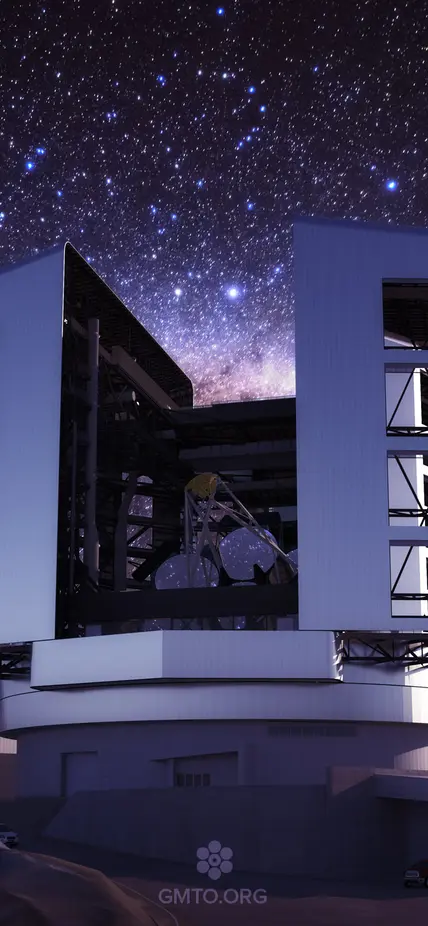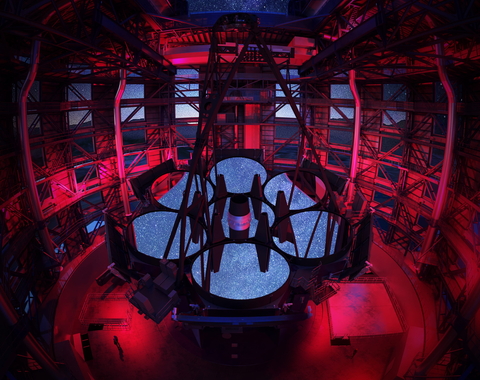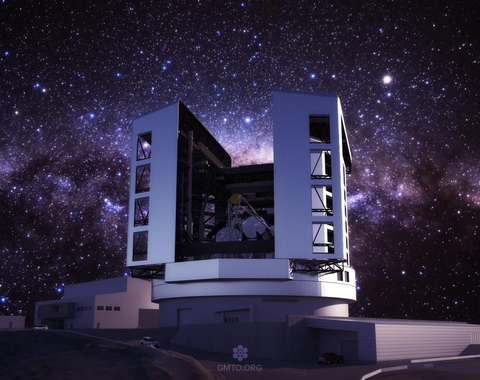Carnegie Commitment
From the establishment of the Mount Wilson Observatory in 1904 to the contemporary development of the Giant Magellan Telescope, Carnegie Science has stood at the forefront of pioneering astronomical research and telescope construction for well over a century. Anchored in a legacy of constructing and harnessing state-of-the-art observatories, our scientists stretch the limits of human understanding, unveiling the mysteries of the cosmos through constant innovation and unbridled exploration.
The conception of the Giant Magellan Telescope took root within the halls of the Carnegie Science Observatories in the early 2000s before blossoming into the global collaboration we see today. As the Giant Magellan moves closer to its inaugural light, Carnegie Science and its dedicated researchers continue to play a leading role in the telescope's development. Our role extends from providing the prime site at the Las Campanas Observatory to shaping the Giant Magellan's scientific and technological trajectory and assuming a pioneering stance in garnering philanthropic support.
GMT Leadership at Carnegie
Dr. Eric Isaacs is the 11th President of Carnegie Science and the Chair of the Giant Magellan Telescope Organization's Founder Representatives.
Rebecca Bernstein is a Carnegie Staff Scientist and the Chief Scientist for the Giant Magellan Telescope, where she plays a leading role in ensuring that the observatory and its instruments will enable scientists from the project's Founder institutions, including Carnegie, to meet its scientific goals.
Dr. John Mulchaey is the Deputy for Science of the Carnegie Institution for Science and the Director and Crawford H. Greenewalt Chair of the Carnegie Observatories. He also serves on the Giant Magellan Telescope Organization's board of directors.
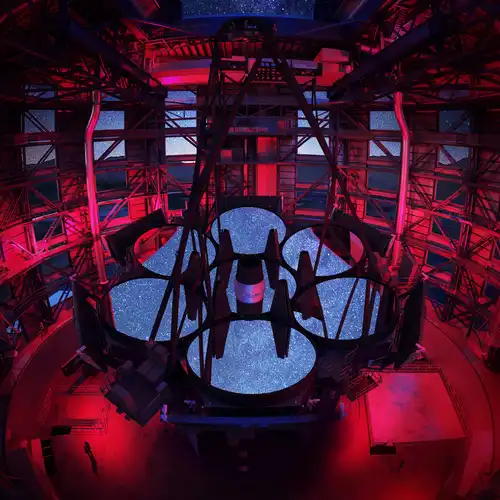
The Universe in HD
The Giant Magellan is expected to be 10x sharper than the Hubble Space Telescope, have 4x the spatial resolution of the James Webb Space Telescope, and be 200 times more powerful than any ground-based telescope currently in existence.
The Giant Magellan gets its viewing power from seven 8.4-meter mirrors arranged like petals on a flower. This configuration provides a total collecting area that's equivalent to a single mirror with a diameter of 25.4 meters. This larger collecting area allows the Giant Magellan to gather more light and produce higher-resolution images, enabling scientists to observe the universe in greater detail than ever before.

Under Southern Skies
The Giant Magellan Telescope is under construction at the Carnegie Science Las Campanas Observatory in Chile. The dark skies and extremely low humidity make the Chilean high Atacama Desert region one of the best places on Earth for telescopes. Located in the Southern Hemisphere, astronomers will be able to observe the center of the Milky Way, the nearest supermassive black hole, the closest planet Proxima Centauri b, the Magellanic Clouds, and much more.
The site at Las Campanas is 2,514 meters above sea level. The high altitude, low moisture, and calm winds mean astronomers can count on low atmospheric interference. The adaptive secondary mirrors clean what's left of any atmospheric light distortion before sending the signal to the telescope's scientific instruments.
Learn about our observatoriesGiant Magellan Enabled Science
The Giant Magellan's spectroscopic and high-resolution imaging capabilities will enable it to analyze exoplanet atmospheres in greater detail than ever before. GMT will take up the challenge of studying how other planets formed and whether they received the inventories of elements necessary for life. Observations may reveal key chemical components and biosignatures and offer a glimpse into the habitability of other worlds.
Importantly, the GMT’s ability to work at short wavelengths will allow Carnegie scientists to probe important biosignatures (like oxygen and ozone) that the James Webb Space Telescope cannot observe. Our scientists will also be able to use the GMT to measure the masses of Earth-like planets and probe their atmospheres to see if they resemble Earth’s.
Giant Magellan's massive mirrors will allow us to look closer to the Big Bang than we ever have before. Scientists will peer back in time and provide insights into the formation of the first galaxies and stars, shedding light on the processes that ignited cosmic light.
Carnegie scientists will use the telescope to study the first generation of stars and determine how and why they are different than stars formed today. Observations of nearby galaxies also suggest that all large galaxies harbor a supermassive black hole at their center. Carnegie scientists will use the Giant Magellan to determine when these black holes formed and what role they play in how galaxies have changed in time.
The Giant Magellan can study asteroids, comets, and outer Solar System objects, providing insights into the early stages of our own Solar System's formation and the dynamics that have shaped it over billions of years.
The Giant Magellan's observations of cosmic structures will contribute to understanding the properties and behaviors of dark matter and dark energy, two of the most significant components of the universe. The telescope will allow Carnegie scientists to probe the nature of these components in both the nearby and distant Universe to gain a better understanding of the nature of these dark components.
While astronomers have an understanding of how some of the elements are made, the origin of many others remains unknown. Through observations of stars, galaxies, and stellar explosions, the Giant Magellan will contribute to our understanding of how chemical elements, from hydrogen to heavy metals, were forged in these cosmic crucibles.
The telescope will allow Carnegie scientists to study rare events like the merger of neutron stars in unprecedented detail to help complete our understanding of where the elements come from.
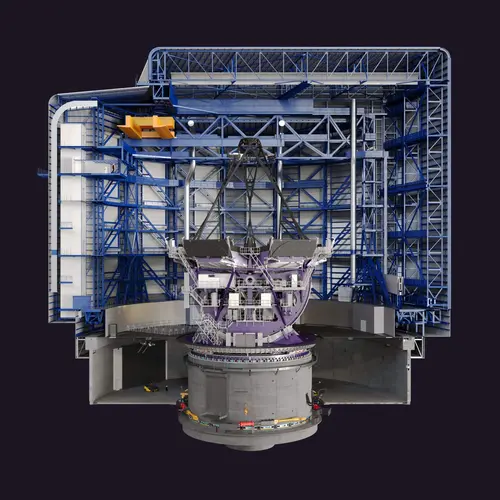
Innovative Instrumentation
The light from the telescope will be fed into scientific instruments—a suite of cameras and spectrographs—which will allow scientists to capture, study, and record it at wavelengths from the near-UV to the mid-infrared and to study objects from our own Solar System to the furthest visible reaches of the universe.
These innovative tools will allow astrophysicists to unravel the mysteries of dark matter, dark energy, black holes, and the Big Bang. It will also greatly enhance the search for life on other planets, as the Giant Magellan will be capable of detecting Earth-sized planets and key biosignatures—including oxygen.
Learn more on the GMTO WebsiteGMT Updates
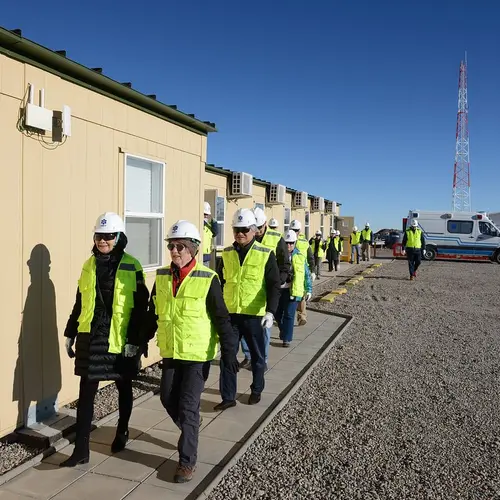
Community Effort
The Giant Magellan Telescope is more than just a telescope; it’s a global scientific collaboration with institutional partners in Australia, Brazil, South Korea, Israel, the United States, and Chile.
The project started as a twinkle in the eye of astronomers at the Carnegie Science Observatories in the early 2000s to address the instrumentation needs of the scientific community. In 2004, an initial group of scientists and engineers from Carnegie Science, Harvard University, the Smithsonian Institution, and the University of Arizona worked together to develop the initial concept for an extremely large telescope.
In 2009 the group founded GMTO—a consortium of thirteen international academic and research institutions united by a shared commitment to construct the most expansive and sophisticated optical telescope ever conceived. With these institutions at the helm, GMTO will execute the design, construction, and operation of the telescope.
Meet the Founders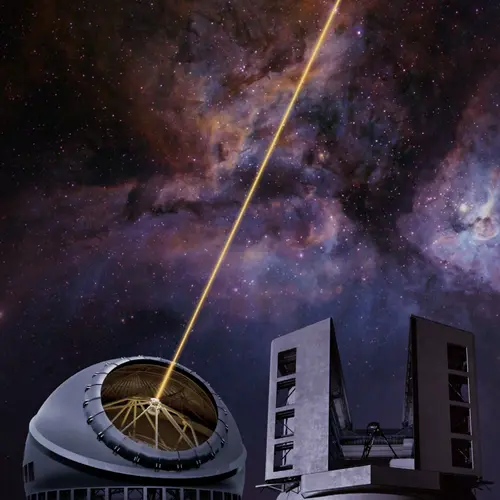
Extreme Telescopes, Extreme Priority
The US Extremely Large Telescope program (US-ELTP) is a joint initiative to provide the entire US astronomical community with access to the Giant Magellan Telescope in the Southern Hemisphere and the Thirty Meter Telescope in the Northern Hemisphere.
In late 2021, the National Academies of Science, Engineering, and Medicine ranked the Giant Magellan—as part of the US-ELTP program—as the top strategic priority for ground-based telescopes, recommending federal support to complete its construction. The recommendation emphasized that building an extremely large telescope “is absolutely essential if the United States is to maintain a position as a leader in ground-based astronomy.”
Learn moreResources and Media
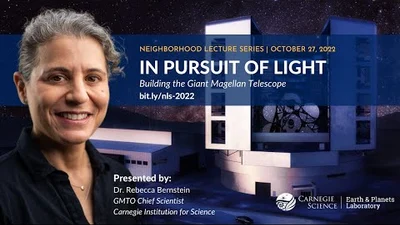
Peer into space with the Giant Magellan Telescope’s Chief of Science Rebecca Bernstein
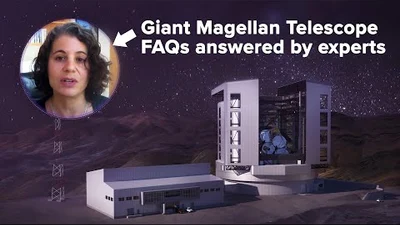
Giant Magellan Telescope FAQs Answered by Experts

Tour Carnegie Institution for Science's Las Campanas Observatory
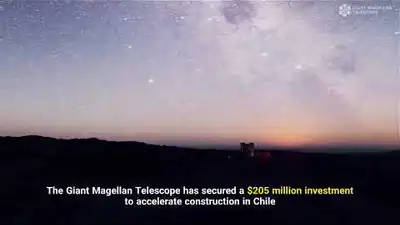
$205 Million Investment Accelerates Construction of the Giant Magellan Telescope

The Pursuit of Light: A Virtual Conversation with Astronomer Rebecca Bernstein
